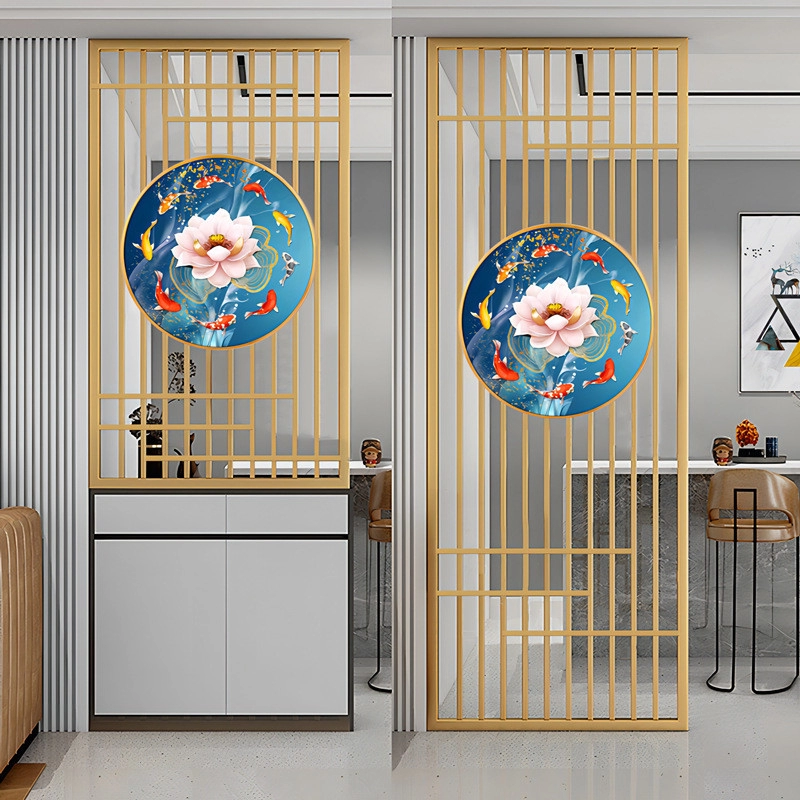Decorative Wall Metal Panels: 8 Secret Designs Transforming Spaces

Why Traditional Walls Fail Modern Architecture
Architects and designers face constant pressure to create spaces that balance aesthetics, durability, and functionality. Traditional materials often fall short – they crack, fade, or lack visual impact. Enter decorative wall metal panels, the unsung heroes transforming commercial and residential spaces globally. These panels solve the core dilemma of combining artistic expression with structural resilience, especially in high-traffic areas. The shift toward metal isn’t accidental; it’s a response to the limitations of wood, plaster, and concrete that degrade faster and offer less design flexibility. Interestingly, the global metal panels market is projected to reach $162 billion by 2027, reflecting their growing dominance in architectural solutions :cite[6].
Material Matchmaker: Choosing Your Metal Soulmate
Not all metals perform equally. Your project’s success hinges on selecting the right type:
Stainless Steel Panels
With thickness ranging from 0.4mm to 15mm, stainless steel (grades 201, 304, 316L) offers exceptional corrosion resistance, making it ideal for humid environments like pools or coastal buildings. The embossed 3D wave patterns create dramatic light-play effects on walls and ceilings :cite[8].
Aluminum Alloy Systems
Lightweight yet durable, aluminum panels (A6063 alloy) feature powder-coated or PVDF finishes in any RAL color. Their flexibility allows for curved installations – perfect for feature walls and artistic ceilings. We’ve seen them last over 20 years in exterior applications with minimal maintenance :cite[9].
Corten Steel Specialty
The “rust beauty” option develops a protective oxide layer over time, eliminating painting needs. Its earthy tones create striking natural aesthetics in garden screens and exterior cladding. Maximum panel sizes reach 1800mm x 6000mm for seamless installations :cite[6].
| Panel Type | Best For | Lifespan | Cost/Sq.Ft |
|---|---|---|---|
| Stainless Steel | Interior feature walls, wet areas | 30+ years | $25-$40 |
| Aluminum | Exterior cladding, ceilings | 20-25 years | $18-$30 |
| Corten Steel | Outdoor art, garden screens | 50+ years | $35-$60 |
Installation Mastery: 5 Foolproof Steps
Proper installation prevents costly redos. Follow this industry-tested sequence:
Step 1: Substrate Preparation – Ensure surfaces are level, dry, and structurally sound. Metal framing requires ≤16″ spacing for heavy panels. Check for plumbing/electrical conflicts before mounting :cite[4].
Step 2: Precision Cutting – Use waterjet or laser cutting for complex designs. Allow 3mm expansion gaps on all sides – our team learned this hard way during a 2025 Shanghai hotel project when summer heat caused warping!
Step 3: Secure Mounting – For exterior installations, employ stainless steel clips or z-girts that allow thermal movement. Interior panels can use concealed magnetic systems like Displate’s technology for easy reconfiguration :cite[10].
Step 4: Joint Treatment – Use color-matched silicone sealants for weatherproofing. Avoid rigid fillers that crack under thermal stress.
Step 5: Protective Finishing – Apply automotive-grade wax on patina-prone metals. For powder-coated surfaces, annual cleaning with pH-neutral solutions maintains vibrancy.
Critical Warning: Avoid These Costly Mistakes
⚠️ Ignoring Thermal Expansion: Metal panels expand/contract significantly with temperature changes. Not incorporating expansion joints leads to buckling – a $14,000 rework lesson from an Arizona condo project.
⚠️ Wrong Finish for Environment: Standard powder coating degrades in coastal salt air. Specify PVDF or anodized finishes for these zones. In one seaside restaurant, corrosion appeared within 8 months due to this oversight.
⚠️ Poor Drainage Planning: Horizontal cladding must have integrated drainage channels. Trapped moisture causes staining and substrate damage, especially behind perforated metal panels.
Transformative Case Studies
These real-world examples showcase design innovation:
Zahner ImageWall® Portraits
Minnesota’s 1256 Penn Avenue features laser-cut stainless steel portraits of civil rights activists. Using Cross-Seam Perf™ technology, the decorative wall panels transformed a plain building into a community landmark. The secret? Pixel-mapping technology converted photos into perforation patterns :cite[3].
FASTEK’s Dynamic Facades
Taiwan’s EVA Air HQ revitalization used color-coded aluminum panels in their signature green. The interlocking design with vertical gardens reduced cooling loads by 15% while creating brand recognition. Their metal cladding systems prove sustainability and aesthetics coexist :cite[9].
Magnetic Art Revolution
Displate’s steel art panels captured 12% of the wall decor market by solving the “commitment phobia” of permanent installations. Their magnetic mounting lets users swap artwork in seconds – a genius approach to decorative metal panels for evolving spaces :cite[10].
Pre-Installation Checklist
- Verify panel thickness matches structural load capacity
- Confirm finish compatibility with environmental exposure (indoor/outdoor)
- Test cleaning methods on sample panel
- Plan expansion joint locations every 12-15 feet
- Order 10% extra material for cutting waste/repairs
- Schedule post-installation sealant inspection
FAQs: Designer Insights
Can metal panels be used in bathrooms?
Absolutely! Choose 316L stainless steel or aluminum with PVDF coating. Their non-porous surfaces resist mold – actually healthier than many “waterproof” alternatives. Ensure siliconized seams at wet zones.
How do I maintain exterior installations?
Twice-yearly cleaning with mild soap and soft brushes preserves finishes. Inspect fasteners annually. Surprisingly, corten steel requires less maintenance once patina stabilizes (approx. 18 months).
Are custom designs affordable?
Laser-cutting technology lowered costs dramatically. Minimum orders start at 10 pieces with lead times of 15-30 days. For basic geometric patterns, expect 15-20% premium over stock panels – well worth it for signature spaces.









